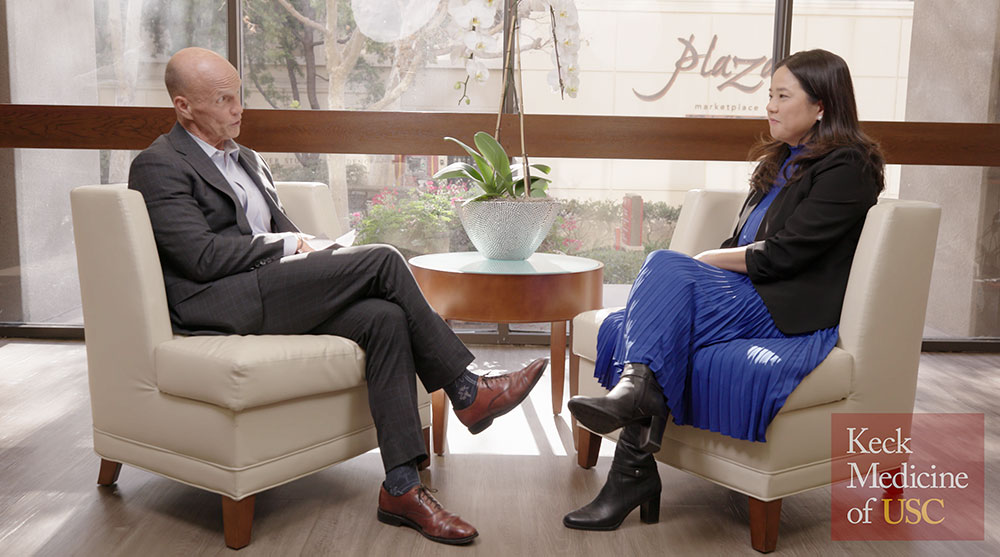
Rod Hanners, CEO of Keck Medicine of USC, talks with Dr. Tarina Kang about her executive leadership role at USC Verdugo Hills Hospital.
“Conversations with Rod” is a video series featuring Rod Hanners, CEO of Keck Medicine of USC, talking with our doctors about our innovative medical care and research. In this video, Hanners sat down with Tarina Kang, MD, the chief medical officer at USC Verdugo Hills Hospital (USC-VHH), to discuss how her background in emergency medicine prepared her for executive leadership. Watch the full video below — or read excerpts from their conversation.
Interview Excerpts
Prior to your role as chief medical officer at USC-VHH, you worked in emergency medicine and transformed the Evaluation and Treatment Center at Keck Medical Center of USC. Can you tell us more about that project?
Tarina Kang, MD: Keck Medical Center is unique in that there’s no emergency department, so the Evaluation and Treatment Clinic, or the ETC as we like to call it, was created to provide patients access to their physicians. I think that the collaboration has been really positive for a couple of reasons. Emergency medicine physicians are trained to be able to take care of a whole gamut of patients. So, we’re comfortable taking care of medically based patients and post-surgical patients alike. Another positive aspect of this partnership is that we are comfortable taking care of potentially critically ill patients. And so, if an unfortunate event arises in the ETC, we are able to render aid.
How did your background in emergency medicine prepare you for your executive leadership role?
TK: I don’t think it’s uncommon to see emergency medicine physicians in leadership, and I don’t think it’s a coincidence. The reason I say that is — the very things that we are taught to do as emergency medicine physicians are the same skills that we utilize in executive leadership. Emergency medicine physicians are taught to focus and finish a task in an environment that can be very busy and sometimes chaotic. We are taught to multitask and triage, which means that we are able to take care of lots of different types of patients with many different types of problems, but we are able to understand who needs care first. And I think most importantly, we’re able to do more with less. When you transition those skill sets to executive leadership, you can see that a lot of those same skill sets are used in everyday work.
How did you restructure the emergency department for COVID-19 and how is it different from before the pandemic?
TK: During the height of the pandemic, our true focus was on taking care of patients in a safe way — a large volume of patients, some of them critically ill — while also making sure that our physicians and our staff felt safe in their environment. Now that we’re emerging out of the COVID-19 pandemic, we are trying to re-implement the pre-COVID innovations and awesome ideas that we had in play before the pandemic. But I think it’s really important to remember the incredible impact and effect that COVID had on all of us, as people — emotionally, physically and psychologically — and to remember that as we sort of move forward out of the pandemic.
Topics
